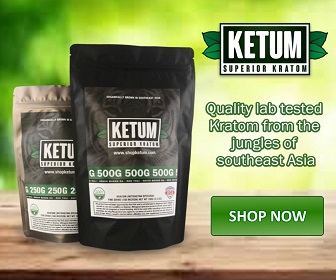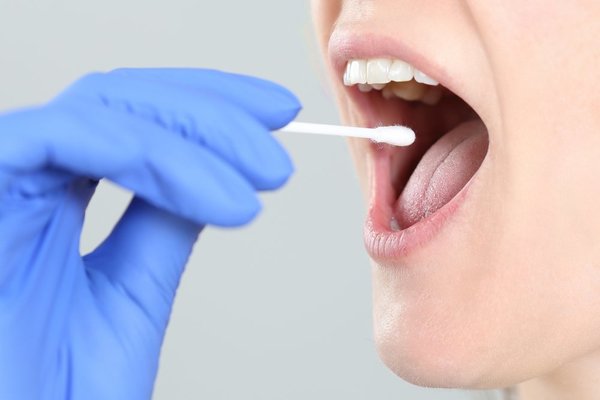With the rise in popularity, matcha is gradually embedding deep into other cuisines besides Japanese cuisine. It has now become a wanted ingredient in American culture. With this surge, many manufacturers have started its production for monetary gain at the cost of quality. Therefore, it is important to know where to buy matcha online and what to consider before purchasing matcha online or locally.
Not all vendors sell real matcha. In fact, some matcha sellers may misrepresent the facts. High grade and pure matcha are expensive and challenging to produce as only the healthier leaves from the plants grown under the shade are selected, then deveined and destemmed after drying.
These leaves are then crushed into powder with stones. Any variation in this process may compromise quality. Since its production is not regulated, unprincipled producers may deviate from this challenging and time taking process by either selecting leaves not grown under the shade or grind the leaves with stem and veins then proudly label it as matcha tea to sell to the unacquainted but desperate buyers.
In light of the above facts, we have summarised few best places to buy matcha online and the key characteristics to keep in mind while you are out to purchase matcha tea powder because all the benefits of matcha tea can be reaped only if you have the best matcha.
Quick Comparison: Top 7 Best Matcha Brands Online
| No | Brand | Grade |
| 1 | Encha Ceremonial Grade Organic Matcha | A |
| 2 | Matcha DNA Certified Organic Matcha Green Tea | A |
| 3 | Kenko Matcha Green Tea | A |
| 4 | Jade Leaf Matcha Green Tea | B+ |
| 5 | Kiss Me Organics Matcha Green Tea Powder | B |
| 6 | The Republic of Tea Matcha Powder | B |
| 7 | Zen Spirit Matcha Green Tea | B+ |
Full review of 7 best Matcha sellers Online
1. Encha Ceremonial Grade Organic Matcha
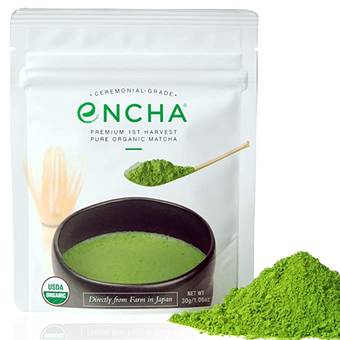
Encha Organic Matcha, ceremonial-grade matcha is made from the leaves first harvested in spring, i.e., in May, grown in the farms in Uji, Japan. It is a USDA Certified Organic matcha tea that is available in different packagings such as an eco-friendly glass jar with the lid of bamboo and a resealable bag.
The packaging is BPA free and maintains the freshness of the powder. It is available for online ordering too. Culinary and latte grades are also available.
Encha matcha powder has the following properties:
Texture: exquisite and smooth
Color: vibrant green
Taste: slight nutty with umami undertone
2. Matcha DNA Certified Organic Matcha Green Tea
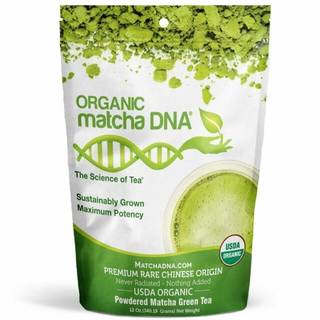
Matcha DNA Certified Organic Matcha Green Tea comes from the Chinese farms in the mountains of the Fujian province of China. It is 100% USDA ORGANIC tea powder with a delicate and good taste, which can be made as tea, smoothies, and lattes or can be used for cooking. Its packing is BPA-Free, and the pouches are sealed.
Texture: Fine and smooth
Color: Dull green
Taste: Slightly astringent taste with bitter after taste
3. Kenko Matcha Green Tea
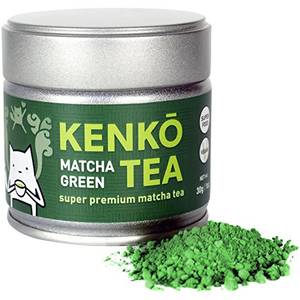
Kenko is an online tea shop in Melbourne, Australia, that works directly with the high-end matcha producers in Nishio, Japan. Kenko produces both grades of matcha: ceremonial and culinary.
It is 100% USDA Certified Organic and 100% natural, produced by stone-crushing the finest, greenest, and the youngest leaves, then packed in airtight bags to preserve freshness. Kenko ceremonial grade matcha is very costly but has many health benefits, including improved brain activity, energizing, and helping in burning fat.
The cheaper culinary grade matcha by Kenko can be used for cooking or for making smoothies and lattes.
Texture: Fine and smooth
Color: Bright green
Taste: Umami taste (mild bitter taste in culinary grade tea)
4. Jade Leaf Matcha Green Tea
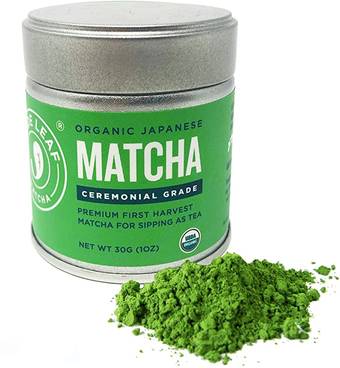
Jade Leaf Organic matcha green tea is available in culinary grade sourced directly from organic farms of Uji and Kagoshima, Japan. It is 100% USDA and 100% natural Organic Matcha Green Tea Powder. Jade leaf matcha tea is available online and in-stores.
It has the following features:
Texture: superfine silky-smooth powder
Color: vibrant, emerald green color
Taste: fresh, little grassy, and slightly sweet
5. Kiss Me Organics Matcha Green Tea Powder
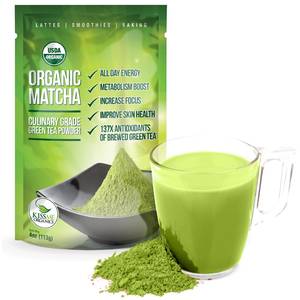
Kiss Me Organics is a US-based company that produces this culinary grade, 100% organic matcha, with its origin in Japan.
It is made from the finest leaves and is ideal for cooking and baking. It is packed in nitrogen-flushed, BPA-free resealable pouches with zips to maintain freshness and potency. It is available both in-stores and online. Ceremonial grade matcha is also available.
Texture: Fine
Color: vibrant, emerald green color
Taste: grassy, bold matcha flavor, little astringency, and slight sweetness
6. The Republic of Tea Matcha Powder
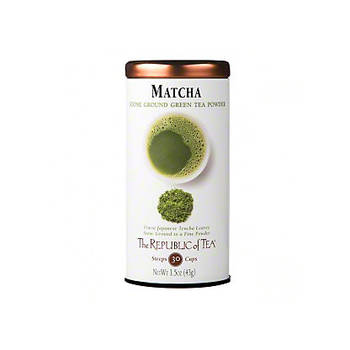
For this Japanese organic matcha powder, premium Japanese Tencha leaves are stone crushed to produce a culinary grade matcha tea. The ceremonial grade option is unavailable. Several flavors like mint. Ginger, chai, coconut water, chocolate, etc. are available.
The product is not USDA certified for 100% organic purity.
Texture: Stone ground fine powder
Color: Bright green
Taste: Vegetal sweetness, No astringency
7. Zen Spirit Matcha Green Tea
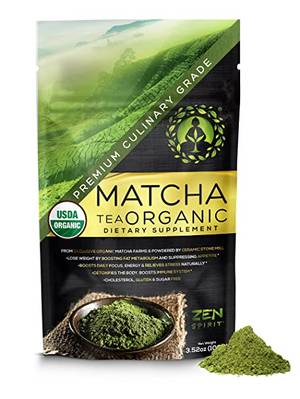
Zen spirit matcha green tea is produced by stone grinding the shade-grown leaves from the Japanese farms in Kyoto and Nishio. This culinary grade matcha is 100% organic, vegan certified, JONA, and USDA organic certified.
Its packed in resealable, easy to use plastic pouches, however, the packing is not satisfactory for longterm use, and you may want to empty the bag in a tin to preserve the freshness.
It is 100% natural with no sugar, cholesterol, or gluten. It comes in smaller packaging, therefore, convenient for the first-timers to try. Available in online shops.
Texture: Stone ground fine powder
Color: Dull greyish green
Taste: Slightly bland for some drinkers, adding some sweetener may cater to the taste buds
But why buy matcha and why start mornings with matcha tea?
One might ask: Is matcha tea worth the hype? Is it worthy of kickstarting a long hectic day?
Well, many of us need an eye-opener caffeine drink every morning; then why not a healthy drink?
Matcha tea is a variant of green tea and both come from the same plant. The difference lies in the nutritional value. When sipping matcha tea, we sip the matcha leaves too, which is not the case with regular green tea.
Green tea leaves are trapped in a tea bag or a tea ball, emitting only the essence and flavor in the surrounding hot water that we drink. Matcha leaves, on the other hand, in powdered form, are dissolved in the water, so it’s safe to say that we drink the leaves!
Matcha is a hub of antioxidants, vitamins, and minerals. Catechins, a plant-based antioxidant found in tea and epigallocatechin-3-gallate (a type of catechin with anti-cancer properties), are abundant in matcha.
It also improves liver, kidney, and brain functions. Matcha contains L-theanine, a compound promotes alertness and relieves stress. L-theanine helps with the after-effects of caffeine on energy levels.
Since the matcha tea powder itself enters our body, the nutritional and caffeine content, though similar to green tea, is more concentrated, thus delivering higher amounts. For example, the content of catechins in matcha is up to 137 times higher than the regular green tea.
There are mainly three grades of matcha: ceremonial, premium and culinary, the latter is further divided into five grades:
- Premium– The everyday use matcha, can be blended with drinks
- Café– Perfect for cooking and baking, a robust flavor
- Ingredient– It is mixed with older tea leaves to give stronger flavors, thicker consistency, for recipes with dairy products.
- Kitchen– Not so smooth, very bitter, produced with few leaves only
- Classic– Most readily available
Key factors to consider before buying matcha online
If you are among the unsure ones confused between different brands, hovering your cursor over the checkout tab or if you are standing in a corner with a grocery cart full of different brands of matcha tea deciding which pack to keep then you are reading the right article.
In order to be able to sip a high-quality matcha tea, you should be aware of the following determinants of quality:
Country of origin
It is generally seen that matcha tea powder from Japan has much better quality than Chinese matcha. Though it is China from where the leaves were first brought to Japan, the Japanese have gone to extra lengths to maintain quality.
Nishio city and Uji city are the two places in Japan that are known to produce refined quality matcha. An aficionado may not have difficulty in differentiating between Japanese and Chinese matcha.
Color
It can be summarised in one sentence: the greener the better!
The brightness of the green color is proof of a higher amount of chlorophyll that is attained when the leaves undergo the shading process. The vibrant jade green color is the hallmark of matcha. Lower quality matcha is dull with a tint of other hues. Yellowish-brown leaves grossly testify that they weren’t adequately shaded or they belong to lower quality plants. Brownness is a sign of oxidization!
Smell
Frangrance tells a lot about quality. A sweet, fresh aroma with a slightly grassy scent reflects the amount of L-theanine in the tea powder. Since this amino acid is lost in the open air and preserved under the shade, its higher amount also proves that the shading process was sufficient. Low-grade matcha has more of a fishy odor or as if something has gotten stale.
Taste
The taste of matcha is quite distinctive, which is popularly known as the 5th taste. Although it might taste slightly bitter but has a sweet undertone. This sweet tinge is called umami. ‘Umami’ is what gives matcha the fifth taste because its taste doesn’t match the four tastes: sweet, bitter, sour, and salt.
Umami is an amalgamation of the words ‘umai’ which means delicious and “mi” which means taste. L-Theanine is mainly responsible for the unique flavor that matcha has. It might not be possible to explain the taste theoretically, you will need a practical experience!
Since low-quality matcha has not been shade-grown sufficiently, it lacks adequate L-Theanine, hence the lack of umami and an unpleasantly bitter taste.
Companies that try to eliminate the mild bitterness matcha has, make it sweeter instead. This is done by using synthetic nitrogen fertilizers to boost up the umami flavor by increasing the theanine in their tea plants artificially. That’s neither natural nor healthy; in fact, it’s not matcha at all then!
Texture
The texture and feel of matcha speak a lot about the quality. Traditionally, matcha tea leaves are ground with stones, in hand-carved granite mills to preserve the nutrition and taste.
Such ground powder has a particular texture that can easily be felt by the expert hands. The particles of high grade, good quality matcha powder is no larger than 5-10 microns; therefore, the texture is finer and silkier than the loose leaf tea.
Here girls and makeup enthusiasts may cognize better because the eye shadow has a similar feel!
A lower-quality grade has a coarser texture when ground due to larger particle size. Experienced fingers may not take long to differentiate between the quality.
The Ingredients
This can be safely called the secret tip, as it is the most overlooked step. People see green packaging labeled matcha and believe it to be pure matcha. It might be the case most of the time, but not always.
If you are buying for the time, a look at the ingredients might help. Having an impure low-grade matcha tea for the first time might cloud the thoughts forever as the first impression is the last impression.
The ingredient list printed on the matcha pack should absolutely not have any fillers. No color additives, no artificial or natural flavors, no sweeteners, no sugars, nothing but 100% pure matcha.
Price
Some may argue this, but it’s a fact. Though not an absolute indicator of quality as it is easy to put an expensive label on a cheap product.
Making high-quality matcha is an expensive process; it cannot be done for a cheaper cost. Who would sell for a value lower than the production cost? Only the one who had invested less in the production by compromising the quality.
You might see 80-100 grams pack of matcha proudly sitting on the shop’s shelves for only 15-30$. The cost of a tin of only 30 grams of ceremonial grade matcha tea should be somewhere around 30-40$, i.e., approximately 1 gram for 1$.
Culinary grade matcha has a lower price than ceremonial due to differences in its production method. It’s ideal of baking and cooking, whereas ceremonial grade, is for drinking, exclusively.
Packaging dates
Although expiry dates are essential on any packaging for matcha, it’s particularly important to know the packaging date as matcha can last between 6 months to 1 year after the package is opened. Beyond that, it loses freshness, hence the flavor and the aroma. Ideally, it should be consumed within a month for consistent taste.
A tin or a bag
Good quality matcha is not dependant upon its packaging. As long as the matcha powder is in a cool, dry, and dark place, it will retain its actual color, flavor, and freshness. Although the Japanese matcha is packed in a tin, so tin packaging has become a symbol of quality.
The Reviews
Last but not least, spare a few minutes to go through a couple of reviews online by different consumers may help in the decision. Though the reviews are subjective, still if you read a few different blogs, it would be less biased.
Reviews should not be from the company’s own website or social media page, also beware of paid publicity. This step is undoubtedly not a 100% reliable one, but over time one gets to know honest bloggers.
Most frequently asked questions about matcha tea
What is matcha?
Matcha is a Japanese green tea. Matcha is known for its vibrant jade green color and health benefits, ruling over the taste buds of the Japanese for ages. Its produced from shade-grown plant leaves and then stone-ground into silky powder.
What makes matcha a healthy drink?
Does matcha contain caffeine?
Yes, it does.
The caffeine of matcha is alkaline, rather than acidic caffeine found in regular tea and coffee. This caffeine enters the blood gradually, thereby maintaining the levels steady over some time. It boosts the mind but does not jolt it!
Moreover, matcha contains the amino acid ‘L-theanine,’ which is a relaxant and helps in regulating the effects of caffeine.
Why does my at-home matcha taste different than what I get one at a cafe?
Why is Matcha more expensive than regular green tea?
The answer lies in the process of making. For producing high-quality matcha tea, leaves are to be grown under the shade, then selected leaves are hand-picked followed by destemming and deveining. Then it is ground into a fine powder, using granite stone mills. It is, therefore, ten times more concentrated with more nutritional value than the regular green tea, hence a lesser quantity of matcha powder is required.
What are the different grades of matcha?
Matcha tea is produced in three grades:
1. Ceremonial- Highest grade only for drinking
2. Premium
3. Culinary – ideal for cooking and baking
Is matcha good for weight loss?
Yes, it does help. Epigallocatechin gallate is a compound in matcha tea that boosts metabolism, strengthens immunity, and blocks fat cell growth.
How often should you drink matcha tea?
NIH has set an upper limit of five cups of green tea daily, but since matcha is a concentrated green tea, 1-2 cups should suffice and serve the purpose.
Can matcha be decaffeinated?
Absolutely not!
The nutrients and antioxidants of matcha would be removed in the process of decaffeination.
How do you make matcha tea?
Matcha is enjoyed in many ways! To know the basics and the traditional method, follow this link:
https://www.guidancepa.com/make-perfect-cup-matcha-tea/.

